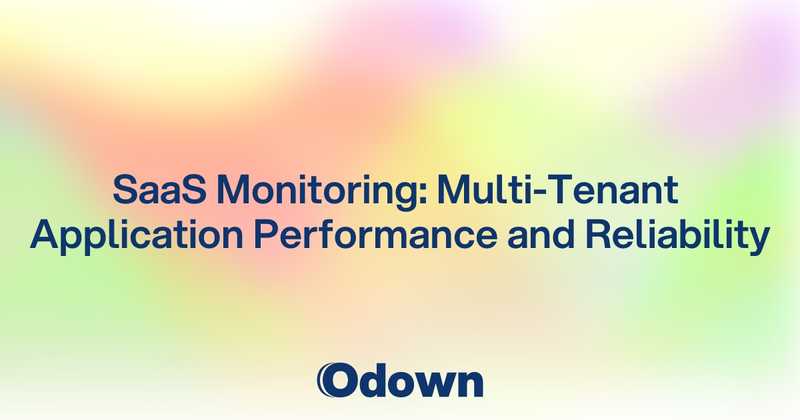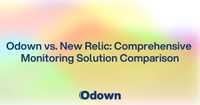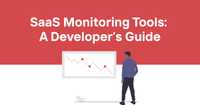SaaS Monitoring: Multi-Tenant Application Performance and Reliability
Your SaaS application serves 50,000 customers across hundreds of organizations. Your monitoring shows everything is green - response times are normal, error rates are low, and throughput is steady. Then you get an angry call from your biggest customer: their users can't access critical features, workflows are timing out, and they're threatening to cancel their enterprise contract.
You investigate and discover the problem: a single tenant's batch processing job is consuming excessive database resources, causing performance degradation for other customers sharing the same infrastructure. Your monitoring caught the technical symptoms but missed the business impact because it wasn't designed to understand multi-tenant performance isolation.
This scenario illustrates the fundamental challenge of SaaS monitoring. Traditional monitoring approaches assume single-tenant environments where performance problems affect all users equally. SaaS applications require monitoring strategies that understand tenant isolation, track customer-specific performance, and correlate technical metrics with business outcomes across thousands of different customer configurations.
Multi-Tenancy Monitoring Challenges and Solutions
Multi-tenant SaaS applications create unique monitoring challenges because multiple customers share infrastructure while expecting isolated, predictable performance.
Tenant Isolation and Performance
Monitoring tenant isolation ensures that one customer's usage patterns don't negatively affect other customers' experience, which is fundamental to SaaS value propositions.
Resource consumption monitoring tracks CPU, memory, storage, and network usage by individual tenants to identify customers whose usage patterns might affect shared infrastructure performance.
Database query monitoring must track tenant-specific database load because poorly optimized queries from one customer can affect database performance for all tenants sharing the same database infrastructure.
API rate limiting monitoring tracks API usage by tenant to ensure fair resource sharing and identify customers whose API usage might exceed expected patterns.
Background job monitoring tracks tenant-specific background processing to identify long-running or resource-intensive jobs that might affect overall system performance.
Storage usage monitoring tracks data storage by tenant to identify customers whose data growth might affect storage performance or costs.
Tenant-Specific Performance Tracking
SaaS monitoring must provide tenant-level visibility into performance metrics while maintaining overall system visibility.
Response time segmentation by tenant reveals how application performance varies across different customers and helps identify customer-specific performance issues.
Error rate tracking by tenant helps identify whether errors affect all customers equally or concentrate among specific customer segments.
Feature usage monitoring by tenant reveals how different customers use application features and helps identify performance optimization opportunities.
Geographic performance monitoring tracks how application performance varies for different customers based on their user locations and data center proximity.
Subscription tier performance monitoring ensures that different service levels deliver expected performance characteristics and help justify pricing tiers.
Cross-Tenant Impact Analysis
Understanding how one tenant's activity affects other tenants is critical for maintaining fair resource sharing and predictable performance.
Resource contention monitoring identifies when multiple tenants compete for shared resources like database connections, CPU cycles, or network bandwidth.
Cascading failure analysis tracks how problems originating with one tenant might affect other customers through shared infrastructure or dependencies.
Noisy neighbor detection identifies tenants whose usage patterns significantly affect other customers' performance and might require intervention.
Tenant priority monitoring ensures that high-value customers receive appropriate resource prioritization without violating service commitments to other customers.
Scalability and Resource Planning
Multi-tenant monitoring must support capacity planning that accounts for diverse customer growth patterns and usage behaviors.
Tenant growth monitoring tracks how individual customers' resource usage evolves over time to support capacity planning and pricing model validation.
Seasonal usage pattern analysis reveals how different customer segments use resources during different business cycles.
Feature adoption monitoring tracks how new features affect resource consumption and helps plan infrastructure scaling for feature rollouts.
Tenant churn correlation with performance metrics helps identify whether performance issues contribute to customer cancellations.
SaaS Performance Metrics: Customer Experience and System Health
SaaS monitoring must balance technical system metrics with customer experience metrics that directly affect subscription retention and business success.
Customer Experience Metrics
Customer experience monitoring for SaaS applications requires understanding how technical performance translates to business value for different customer segments.
User session duration and engagement metrics reveal how application performance affects customer usage patterns and satisfaction.
Feature completion rate monitoring tracks how well customers can complete intended workflows and identifies performance bottlenecks that prevent successful task completion.
Customer support ticket correlation with performance metrics helps identify technical issues that create customer friction and support burden.
Net Promoter Score (NPS) correlation with performance data reveals how technical reliability affects customer satisfaction and retention.
Login success rate and authentication performance monitoring affects customer ability to access services and often represents the first impression of service quality.
System Health for Multi-Tenant Environments
System health monitoring for SaaS applications must account for the complexity of serving many customers with different usage patterns and requirements.
Application performance monitoring across different tenant configurations reveals how customization and configuration affect system performance.
Infrastructure utilization monitoring tracks shared resource usage patterns and identifies optimization opportunities for multi-tenant architectures.
Service dependency monitoring tracks how external services and integrations affect customer experience across different tenant configurations.
Data consistency monitoring ensures that multi-tenant data architectures maintain data integrity and consistency across customer boundaries.
Business Intelligence Integration
SaaS monitoring should integrate with business intelligence systems to provide insights that support business decisions and customer success initiatives.
Customer health scoring combines technical performance metrics with business metrics to identify customers at risk of churn.
Revenue correlation with performance metrics reveals how technical issues affect subscription revenue and customer lifetime value.
Feature usage analytics combined with performance data helps product teams understand how technical constraints affect feature adoption.
Customer success metrics integration helps customer success teams understand how technical performance affects customer outcomes and satisfaction.
Compliance and Service Level Agreements
SaaS monitoring must track compliance with service level agreements (SLAs) and support the transparent reporting that SaaS customers expect.
SLA compliance monitoring tracks uptime, response time, and availability commitments against actual performance delivery.
Service credit calculation based on monitoring data ensures accurate and fair compensation when service levels fall below commitments.
Transparency reporting provides customers with visibility into service performance and demonstrates commitment to service quality.
Incident impact assessment helps quantify SLA violations and customer impact for incident response and customer communication.
Subscription and Usage Monitoring for SaaS Business Intelligence
SaaS business models require monitoring that tracks subscription metrics alongside technical performance to support business decision-making.
Usage-Based Billing and Metering
Many SaaS applications use usage-based pricing models that require accurate monitoring of customer resource consumption for billing purposes.
API call metering tracks API usage by customer and subscription tier to support usage-based billing and fair use policy enforcement.
Storage consumption monitoring tracks data storage by customer to support storage-based pricing models and capacity planning.
Compute resource metering tracks processing time, background job execution, and other computational resources consumed by customers.
Feature usage tracking supports tiered pricing models that provide different feature access based on subscription levels.
Bandwidth monitoring tracks data transfer consumption for customers whose pricing models include data transfer components.
Subscription Lifecycle Monitoring
SaaS monitoring should track subscription lifecycle events and their relationship to customer usage patterns and technical performance.
Trial conversion monitoring tracks how trial customers use the application and correlates usage patterns with conversion to paid subscriptions.
Upgrade and downgrade monitoring tracks how customers change subscription tiers and correlates tier changes with usage patterns and performance experience.
Renewal monitoring tracks subscription renewal patterns and identifies customers whose usage patterns indicate renewal risk.
Cancellation analysis correlates customer cancellations with performance issues, support interactions, and usage patterns.
Customer Success and Retention
SaaS monitoring should support customer success initiatives that improve retention and reduce churn through proactive customer engagement.
Customer engagement scoring combines usage metrics with performance data to identify customers who might benefit from additional training or support.
Feature adoption monitoring tracks how customers adopt new features and identifies customers who might benefit from feature education.
Usage trend analysis identifies customers whose usage patterns indicate expansion opportunities or churn risk.
Customer health monitoring combines technical performance with business metrics to provide early warning of customer satisfaction issues.
Revenue and Growth Analytics
SaaS monitoring should support revenue analytics that help understand how technical performance affects business outcomes.
Monthly recurring revenue (MRR) correlation with performance metrics reveals how service quality affects revenue retention and growth.
Customer acquisition cost (CAC) analysis combined with performance data helps understand how service quality affects customer acquisition efficiency.
Lifetime value (LTV) correlation with service experience helps understand how technical reliability affects long-term customer value.
Expansion revenue tracking correlates upsell and cross-sell success with customer experience and service quality.
SaaS Scaling Monitoring: Handling Growth and Traffic Spikes
SaaS applications must scale efficiently to handle customer growth while maintaining performance and cost efficiency across diverse usage patterns.
Auto-Scaling for Multi-Tenant Environments
Auto-scaling in multi-tenant environments requires coordination between tenant-specific resource needs and overall system capacity.
Tenant-aware scaling policies account for different customer usage patterns and ensure that scaling decisions consider tenant isolation requirements.
Predictive scaling based on customer usage patterns can anticipate scaling needs before performance degradation occurs.
Cost-optimized scaling balances performance requirements with infrastructure costs while maintaining service level commitments.
Geographic scaling monitoring tracks performance across different regions and supports decisions about data center expansion and customer routing.
Traffic Pattern Analysis
Understanding SaaS traffic patterns helps optimize infrastructure and predict scaling requirements for customer growth.
Peak usage analysis by customer segment reveals when different types of customers use the application most heavily.
Seasonal pattern monitoring tracks how customer usage varies throughout business cycles and helps plan capacity for predictable traffic increases.
Feature-driven traffic analysis reveals how new feature releases affect infrastructure load and helps plan scaling for feature rollouts.
Geographic traffic distribution helps optimize content delivery and data center resource allocation.
Performance During Scale Events
Monitoring how SaaS applications perform during scaling events ensures that growth doesn't compromise customer experience.
Scale-up performance monitoring tracks how quickly applications can increase capacity to meet growing demand.
Scale-down efficiency monitoring ensures that applications can reduce infrastructure costs during low-demand periods without affecting customer experience.
Database scaling monitoring tracks how database performance changes during scaling events and identifies optimization opportunities.
Service discovery monitoring ensures that new infrastructure components integrate properly with existing systems during scaling operations.
Cost Optimization During Growth
SaaS monitoring should support cost optimization efforts that maintain service quality while managing infrastructure costs as customer base grows.
Resource utilization optimization identifies opportunities to improve infrastructure efficiency and reduce per-customer costs.
Reserved capacity monitoring tracks how well reserved infrastructure capacity matches actual usage patterns.
Spot instance monitoring tracks the use of cost-optimized infrastructure that might have different availability characteristics.
Multi-cloud cost optimization monitors infrastructure costs across different cloud providers and identifies opportunities for cost reduction.
SaaS monitoring transforms subscription software from reactive customer support into proactive customer success that prevents churn and drives growth. Instead of discovering customer experience problems through support tickets, you identify and resolve issues before they affect customer satisfaction.
The investment in comprehensive SaaS monitoring pays dividends in improved customer retention, reduced support costs, and data-driven insights that support pricing optimization and product development decisions. You finally get the visibility needed to scale subscription software profitably while maintaining the customer experience that drives retention and growth.
Ready to implement comprehensive SaaS monitoring? Odown provides multi-tenant aware monitoring that tracks customer experience alongside system performance with the scalability and reliability that growing SaaS businesses require. Combined with our healthcare monitoring expertise, you'll have monitoring strategies that work across highly regulated and rapidly scaling technology environments.



